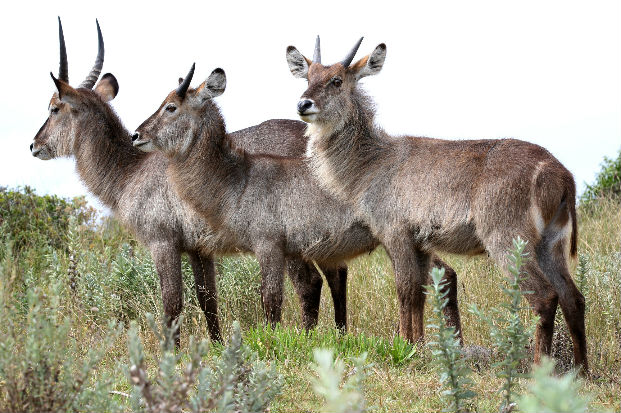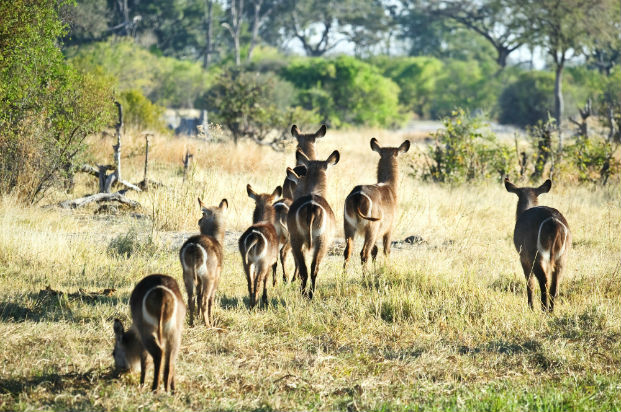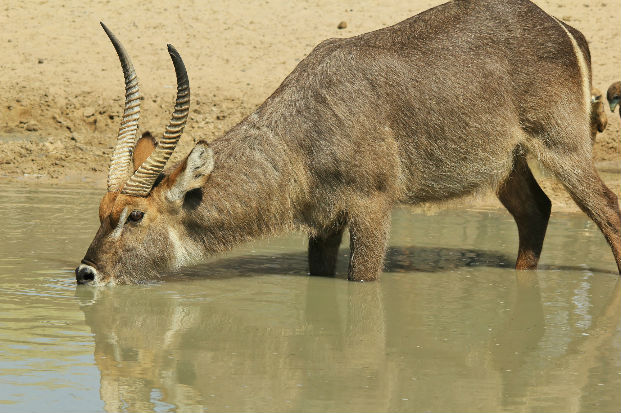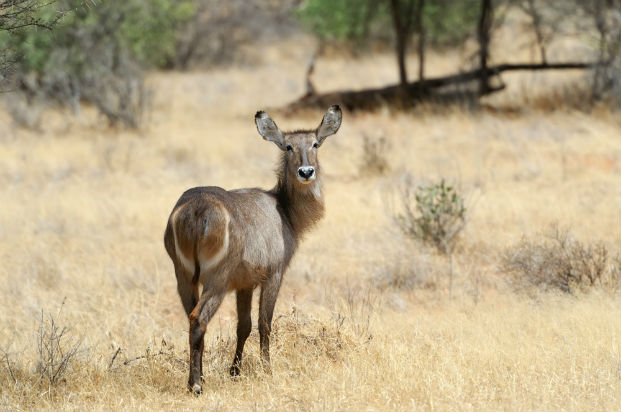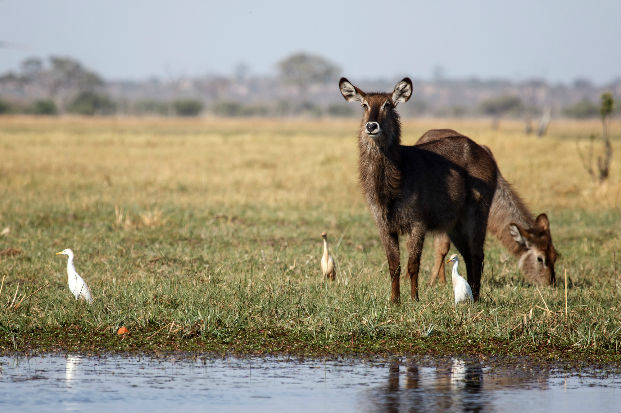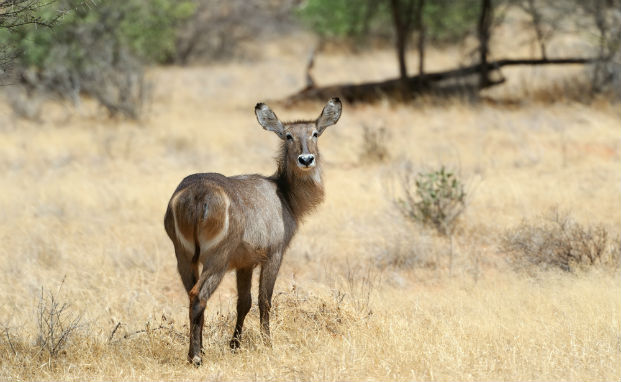
A very heavy antelope that is rarely more than 2 km from water. Both sexes sport a distinctive white “lavatory seat” marking on the rump. The males have an impressive set of horns. Waterbuck have a wide range of habitat, from flood plains and reed beds to woodland and rocky areas, provided of course that they have access to water.
Vote for the fact you find most fascinating
Territorial bulls will tolerate submissive males. In fact some younger bulls will act as an “understudy” to the dominant bull helping to defend the territory. This is done for the chance of one day inheriting the territory when the territorial males dies or becomes weak.
Between the age of 9 and 12 months male waterbuck horns will start to show. At this point they will be chased from the natal herd by territorial bulls where they will join a bachelor herd.
Waterbucks have a white “lavatory seat” ring on their rump which gives rise to the Afrikaans colloquial name of “kringgat” which translates as “circle bottom”.
Despite common belief, predators do not avoid waterbuck because of the musky odour that they emit.
Because waterbuck have a high urine output they require a protein rich diet which they get from long green grass. When this is in short supply they will browse and eat herbs. During the winter they will supplement their diet with baboon droppings.
Male waterbuck have developed a 2 cm thick skin over their neck and shoulders to offer protection from an opponent’s sharp horns when duelling.
Waterbuck have glands on their skin which are thought to have a water proofing quality. These glands release a musky odour which is particularly pungent in territorial bulls that can be smelt up to 500 m away.


